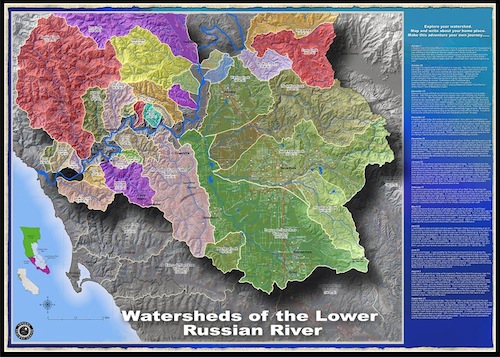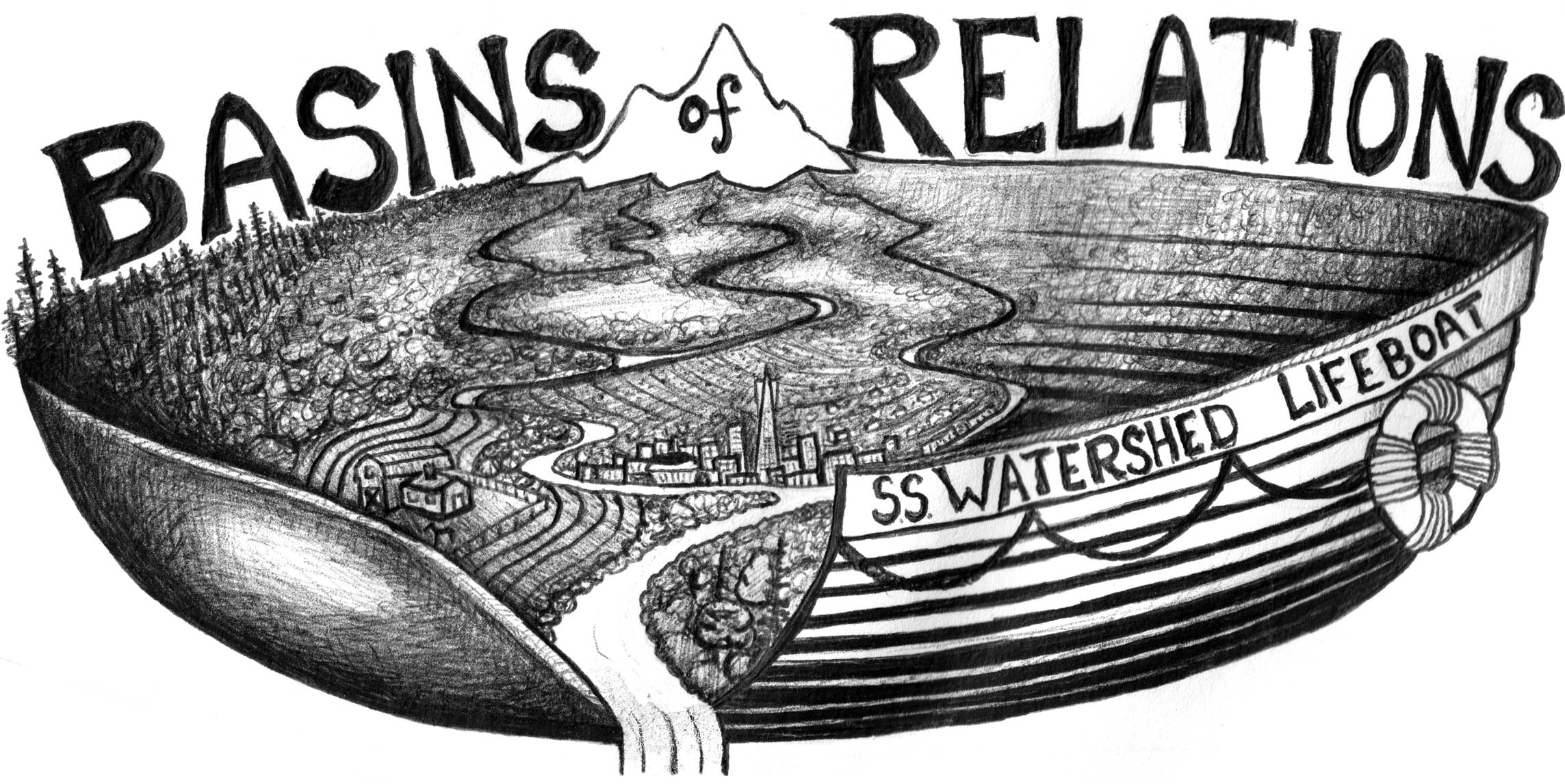
OAEC Co-Founder Brock Dolman coined the term “Basins of Relations” in the mid-1990s to invoke the importance of human relationships within a physical watershed. Brock asserted that these relations must unite to restore degraded basins. They must come together and “think like a watershed,” to borrow a phrase from the community-based watershed and salmon restoration work of the Mattole Restoration Council and Mattole Salmon Group in Humboldt County. He posited that this could be accomplished by organizing the landowners within a watershed—from ridgeline to reef—a practice that was not happening significantly in California in the mid-90s. At the time, he was particularly focused on recovering the coho salmon population, which had dropped to fewer than a dozen by 2000 in his own Russian River Basin of Relations. He knew people coming together at a watershed scale was crucial to changing that trajectory.
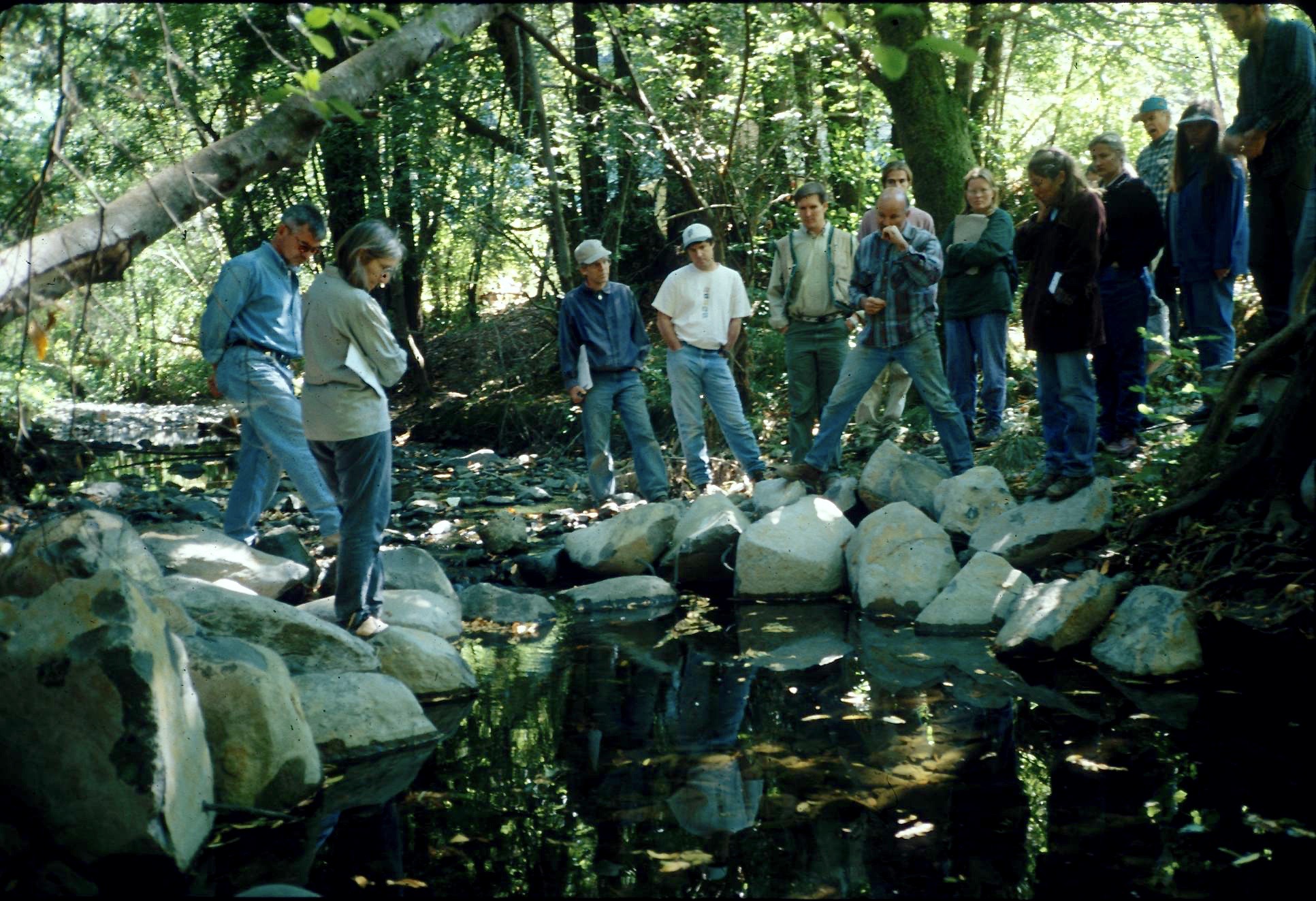
In 1999 OAEC launched the “Basins of Relations” training program to carry out this vision. The four-day residential training brought together teams of adults from high-priority salmonid-bearing watersheds in the North and Central Coastal California regions. The program provided training and follow-up resources to conduct watershed system research and monitoring, implement hands-on restoration efforts, and organize community education projects. The program ran for ten years and trained over 150 individuals from 40 watersheds. The California Department of Fish & Wildlife and the Pacific States Marine Fisheries Commission provided funding for the program over various years.
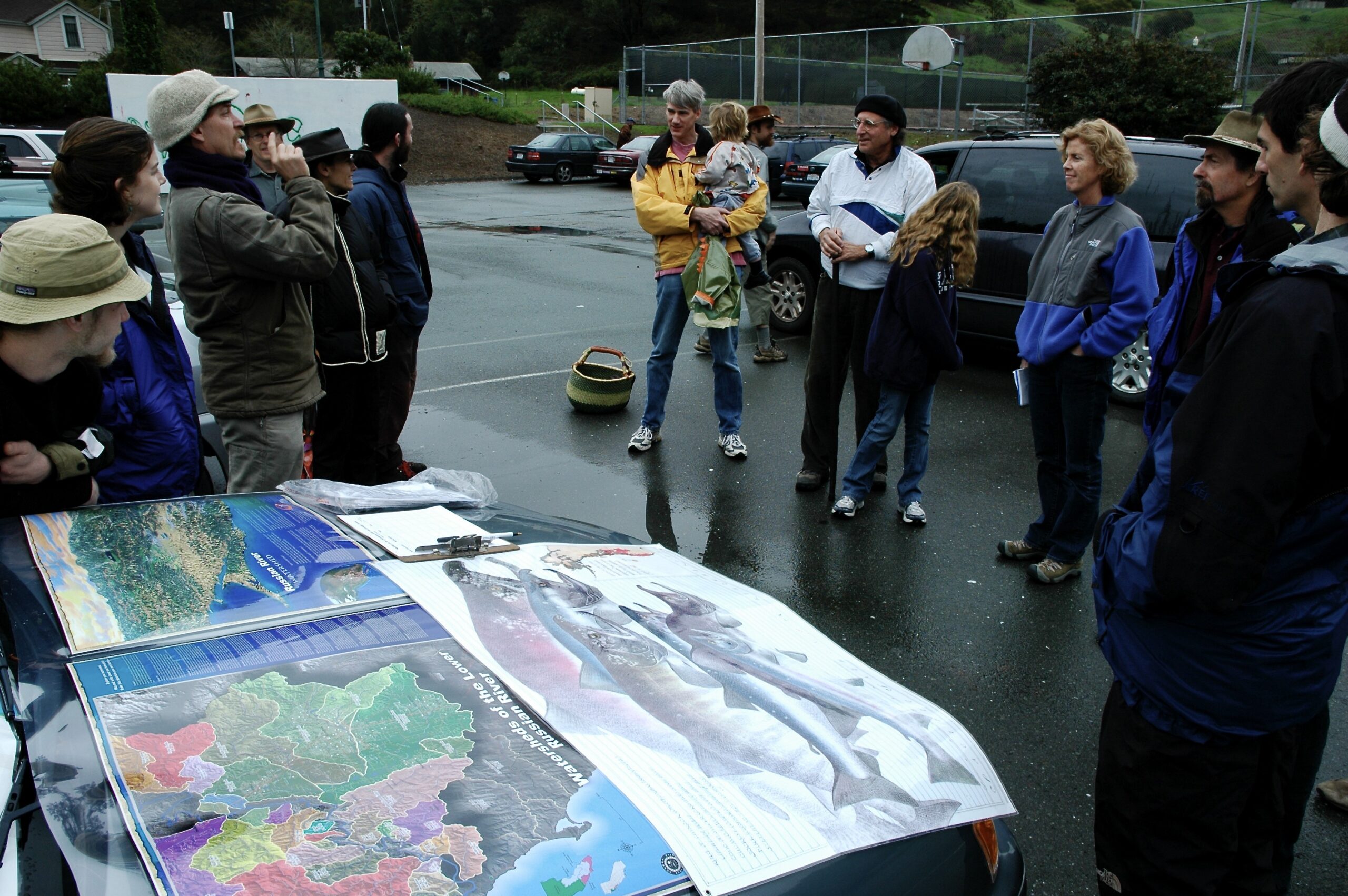
Participants in the “Basins of Relations” Training Program benefited from on-site field-based learning at our 80-acre OAEC site headquarters in the Dutch Bill Creek watershed. They observed upland erosion control, roof water harvesting, gully stabilization, fish-friendly roads, and groundwater recharge structures. Off-site, field-based learning also occurred, including spending time with restoration contractors and landowners visiting their local instream habitat and fish passage restoration projects. Guest experts provided an opportunity for students to develop a working relationship with a diversity of agencies and technical support providers. They also met with professional trainers who demonstrated experience in group facilitation, strategic planning, decision-making conflict resolution processes, and organizational development. Additionally, each watershed group was provided with technical materials in the form of a reader on which to base their watershed planning and restoration activities.
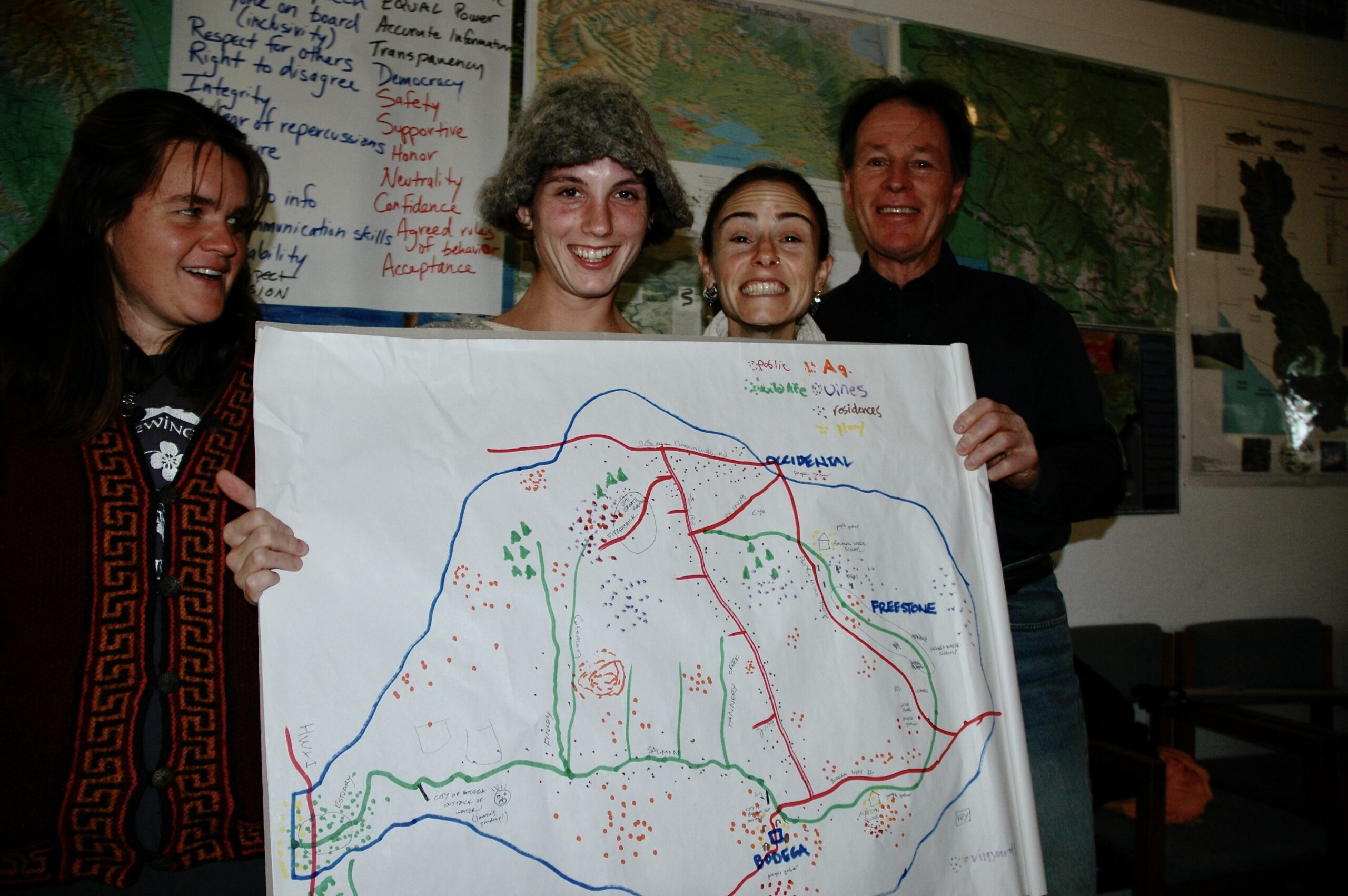
The project ultimately led to the organization of many watershed councils throughout the state. Two of the watersheds from the original training, Salmon Creek Watershed Council and Green Valley Atascadero Watershed Council, are still active today. The Salmon Creek Watershed Council, with participation from OAEC, conducted an estuary study and put the findings to use with a robust restoration program. Additionally, several watersheds in Western Sonoma County came together to form West County Watershed Network, which, among other accomplishments, implemented creek and watershed signage throughout the county, as well as a watershed divide display case in the town of Occidental. The Basins of Relations training program also resulted in the publication of Basins of Relations: A Citizen’s Guide to Protecting and Restoring our Watersheds.

As with all of OAEC’s work, the overarching goal of this program was to move beyond individual actions toward regional, structural solutions. The Basins of Relations program was one of OAEC’s earliest examples of community organizing from ridgeline to reef. Watersheds have increasingly become accepted as a unit of measurement for impacting change, and OAEC is proud to have had a hand in developing and increasing that literacy.
